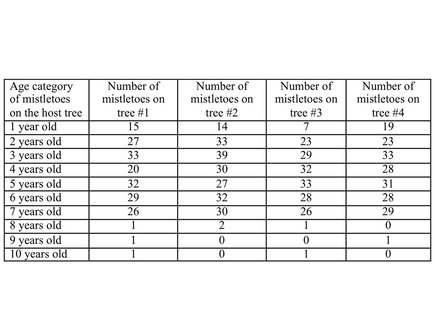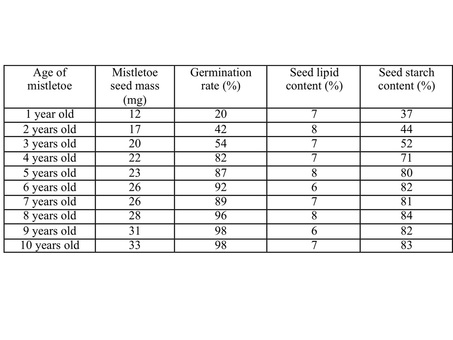Page 430
Mistletoes in southern Utah
In southern Utah, I noticed that age distributions of a hemi-parasitic mistletoe (Phoradendron juniperinum) were not normally distributed when the abundances of these parasites were counted on different juniper trees (host species). Those data are shown on the left table below. Mistletoe mortality is known to be associated with extreme climate events, such as the 2-4 year long drought such as we are experiencing now in Utah. On the other hand, success in mistletoe establishment is thought to be associated with spring-time soil moisture conditions.
In southern Utah, I noticed that age distributions of a hemi-parasitic mistletoe (Phoradendron juniperinum) were not normally distributed when the abundances of these parasites were counted on different juniper trees (host species). Those data are shown on the left table below. Mistletoe mortality is known to be associated with extreme climate events, such as the 2-4 year long drought such as we are experiencing now in Utah. On the other hand, success in mistletoe establishment is thought to be associated with spring-time soil moisture conditions.
At the same time, I evaluated seed production in these same
mistletoes. These data are provided in the right table above. In their reproductive cycle,
mistletoes flower in the spring, seed development takes place in the summer,
and seeds are dispersed in the fall. One
unusual phenomenon I observed was that the average seed biomass of mistletoe
seeds was not constant across different aged mistletoes. After measuring seed
mass, I brought the seeds from these mistletoes back into the laboratory
measured the chemical composition on a subset of the seeds and conducted
germination studies on another random subset of the seeds (data provided above). Germination was not delayed in this species
and seeds germinated within 4 days or did not germinate at all.

